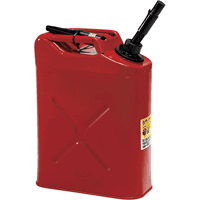"Jeep Cherokee Troubleshooting – Fuel Economy"
October 16, 2009 by Mike StrawbridgeHow to improve the MPG of your XJ
The ignition timing of the XJ Cherokee is not adjustable.
The ECU controls these functions on a set table and feedback from the
knock sensor if equipped. However it
is possible to trick the ECU into advancing the timing by adjusting the mounting
points of the Crank Shaft Position sensor. By
simply slotting the holes, the sensor can be repositioned to adjust the actual
ignition timing. Due to the extreme
difficulty of accessing he mounting bolts of the CPS and the minor improvement
in fuel economy, this modification made not be worth the effort.
Adjustable CPS sensors are available from some Jeep accessory vendors.
One of the biggest factors that effects the MPG of a Jeep Cherokee is it transmission. While the Asin four speed automatic is very durable and features a lock up torque converter, it simply cannot match the fuel economy of the five speed manual transmission. If you are choosing a Jeep for fuel economy, choose one with a five speed manual transmission.
No matter what tires you run, you will need to pay close attention the tire pressure. Generally speaking, the higher the tire pressure, the better the fuel economy. You will have to adjust the air pressure in your Jeep by balancing the factors of tire wear, ride comfort and traction. Always keep your tires properly inflated and air back up before driving on pavement after your off road adventures.
When lifting a Cherokee, it is common to remove the factory air dam. However, this little piece of rubber does improve fuel economy. Keep it in place and straight for best MPG. Also the rubber mat under the engine helps to improve air flow under the XJ for a slight improvement in fuel economy.
Another common modification that reduces fuel economy is armor and protection accessories. Your bumper guards and skid plates and rock trails add weight and in some cases disturb the air flow. Consider the effects on fuel economy when making these modifications.
Proper wheel alignment will increase MPG as well. The front tires need to be pointed as close to straight ahead as possible. Set the toe in as close to zero as possible. The inverted Y steering arrangement of the XJ causes the toe to change with ride height so to maximize the fuel economy, set the toe with the Jeep loaded as you normally drive it.
Possibly the largest single factor effecting fuel economy is your driving style. To maximize MPG, start off slowly and maintain a steady speed. Avoid unnecessary stops. Keep moving as much as possible even at a very slow speed in stop and go traffic. Try to anticipate hills and accelerate before gong up the hill. Let you speed drop naturally hill climbing the hill. Avoid long idle times especially with the AC on.
One questionable area of increasing fuel economy that I have had mixed results with is fuel additives. Many people have reported that adding a small amount of acetone to the fuel will increase the MPG. I have not noticed any measurable increase from adding acetone. However, occasional use seems to prevent stumble and misfires so it seems that it would increase MPG. Try it by adding one ounce of pure acetone for each ten gallons of fuel.
Another additive that seems to help cure fuel supply problems is Seafoam. Seafoam smells like an alcohol blend and probably helps mostly to remove moisture from the fuel system. However, I have found a variety of fuel related issues form clogged or sticking injectors to carbon fouling of the combustion chambers seems to be helped by adding a can of Seafoam to the gas tank.
Oil choice and oil additives can also be used to increase MPG. However the long term effects on the engine need to be considered when choosing oil. Using lower viscosity oil can help increase MPG. However older engines may not lubricate well on low viscosity oils. An additive like Friction Free 3000 has been shown to increase MPG by reducing internal friction in the engine. Give it a try in you engine to see how it works for you.
Always use high quality oil in your Jeep Engine. The design of the 4.0 block causes some parts of the block to be very hot and will cause wax or paraffin based oils to separate. Wax based oils will need to be changed more frequently due to thermal breakdown.
Keeping your Jeep well lubricated in other areas will also help boost MPG. Check differential fluids, transfer case fluid and the transmission fluid on a regular basis to maintain proper lubrication and reduce drag. Locker and limited slip differentials may need to be check more frequently tan the factory recommended intervals. Also, if there is any chance that water has entered these parts due to off road adventures, change the fluid as the water and grease mixture has poor lubricating quality.
Through proper maintenance and a being aware of the effects of common modifications, you can maintain reasonable fuel economy in your Jeep SUV. Higher gas prices do not have to mean the end of your four wheel fun. It may even make some modifications like a second set of tires more economically viable. So pay attention to details and enjoy driving your Jeep Cherokee.
Mike Strawbridge October 16, 2009

